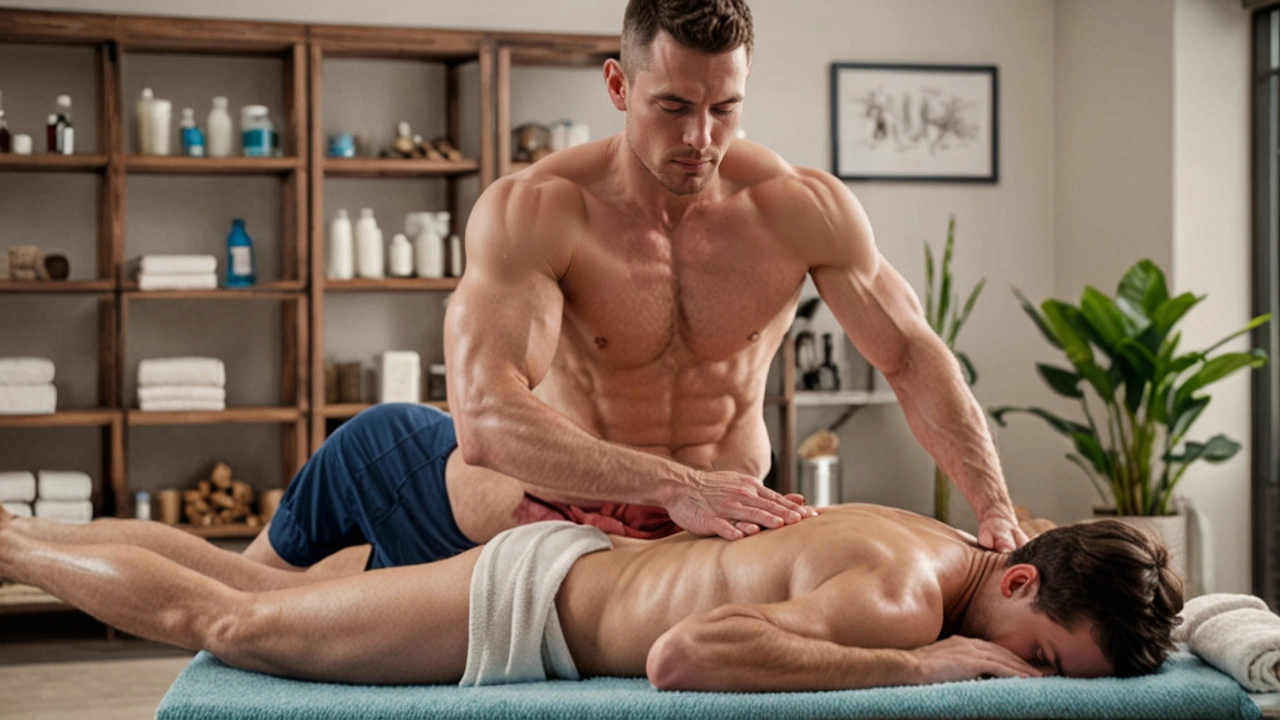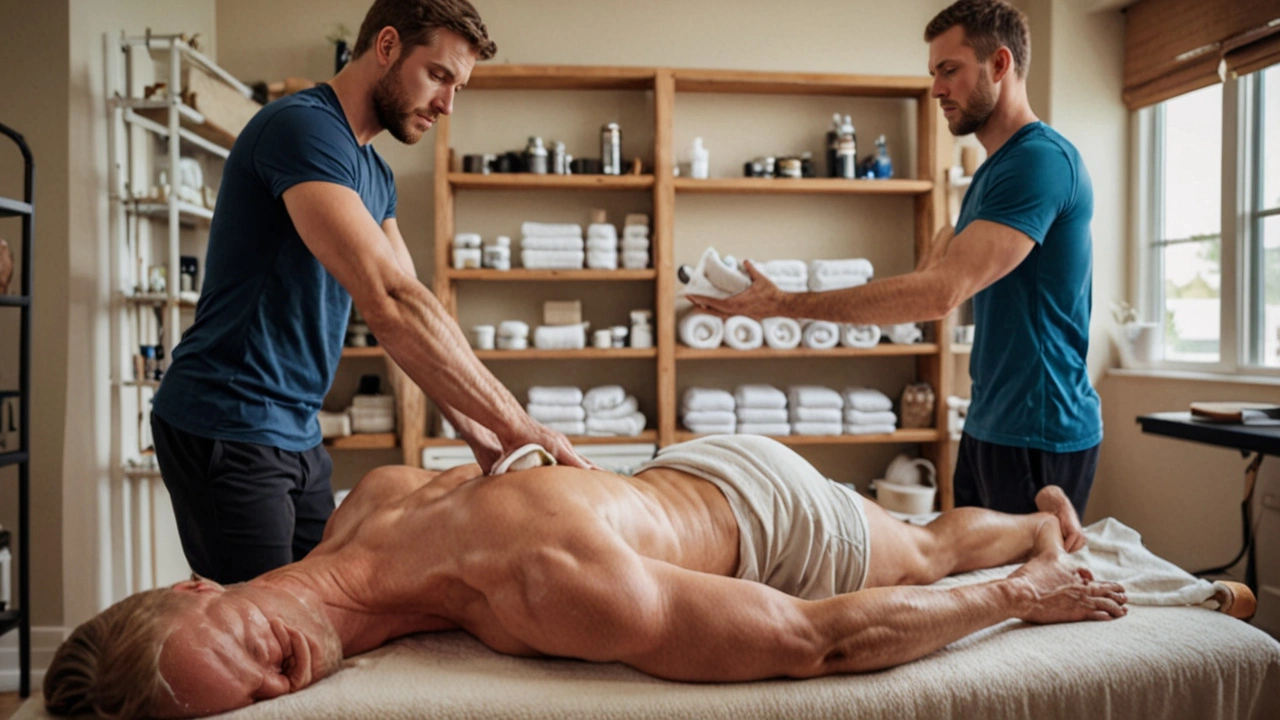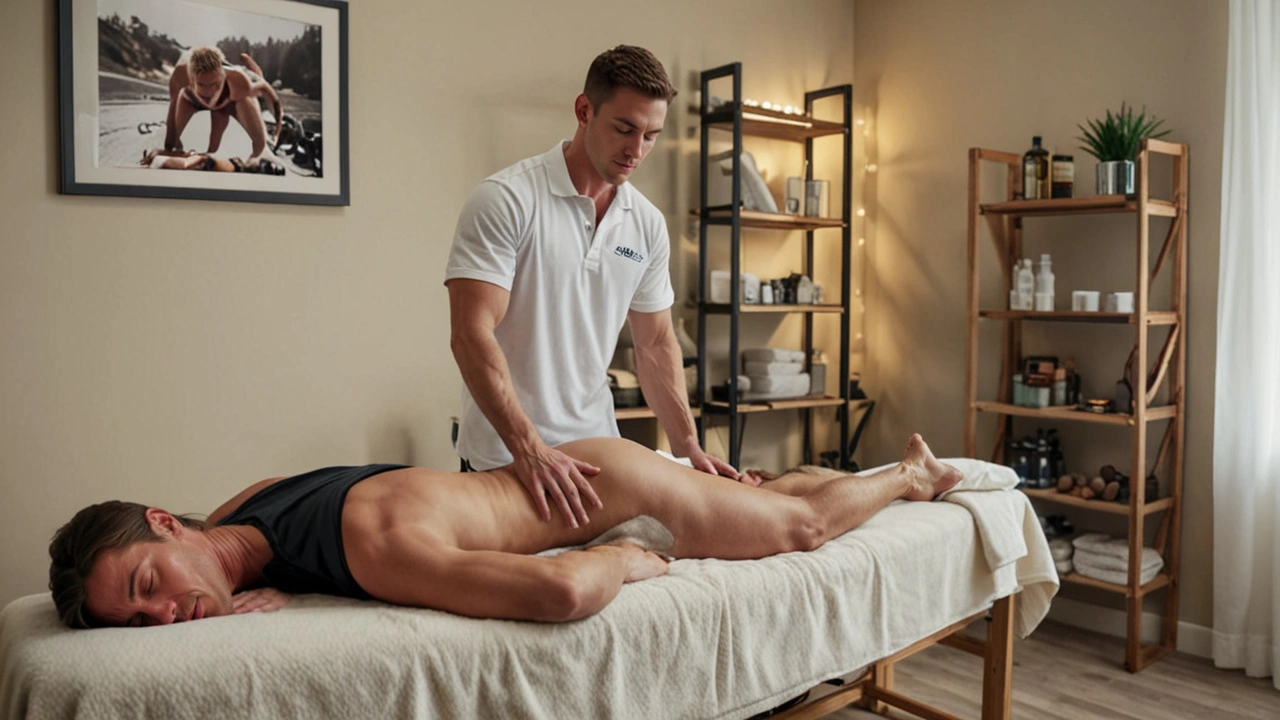Sports massage isn't just for professional athletes; it's an effective recovery tool for anyone who engages in physical activity. Whether you're training for a marathon or just love hitting the gym, sports massage can help you recover faster and perform better.
By focusing on specific muscle groups, sports massage techniques aim to alleviate tension, improve circulation, and reduce the risk of injuries. The right massage can make all the difference in your fitness journey, helping you stay active and pain-free.
So, what's behind this popular recovery method? Dive into the details to discover how sports massage can become your secret weapon for a faster, more efficient recovery.
- What is Sports Massage?
- Benefits for Athletes
- Techniques Used
- Tips for Getting the Most Out of Your Sports Massage
What is Sports Massage?
Sports massage is a type of massage therapy designed specifically for athletes and those who are physically active. It focuses on treating and preventing injuries, as well as enhancing performance. This specialized massage combines various techniques such as deep tissue work, stretching, and trigger point therapy to not only relieve muscle tension but also promote flexibility and increase range of motion.
While sports massage is beneficial for professional athletes, it's equally effective for weekend warriors and fitness enthusiasts. According to the American Massage Therapy Association, incorporating regular sports massages can lead to quicker recovery times, reduced soreness, and an overall improvement in athletic performance. A well-targeted sports massage can even help prevent injuries by addressing muscle imbalances and enhancing joint mobility.
“Sports massage isn’t just for athletes. Whether you’re a marathoner, a casual jogger, or someone who loves group fitness classes, this type of massage can help you enhance your performance and minimize your risk of injury,” says Dr. Nicole Kruck, a renowned physical therapist.
One of the key aspects of sports massage is its adaptability. The massage therapist tailors the techniques to the specific needs and goals of the recipient. For example, pre-event sports massage focuses on warming up the muscles and enhancing circulation, while post-event massage aims to reduce muscle tension and support recovery.
The techniques used in sports massage include everything from effleurage (a gentle gliding motion) and petrissage (kneading) to more intense methods like myofascial release and friction. Each technique plays a role in helping the body recover, prevent injuries, and improve function. By breaking down scar tissue, sports massage can also facilitate the healing of existing injuries, making it a great holistic approach to physical well-being.
Common Techniques in Sports Massage
Different types of strokes and pressures are used during a sports massage session. Some of the most common techniques include:
- Effleurage: Gentle, sweeping strokes that warm up the tissue and increase blood flow.
- Petrissage: Kneading motions that help in breaking down adhesions and reducing muscle stiffness.
- Friction: Deep, circular movements that are effective in breaking down scar tissue and improving range of motion.
- Myofascial Release: A technique that focuses on releasing tight areas of the fascia to relieve pain and restore motion.
By understanding what sports massage involves and the specific techniques used, you can better appreciate its role in a comprehensive fitness and wellness routine. Whether you’re looking to recover faster from a tough workout, prevent future injuries, or simply improve your athletic performance, sports massage offers a pathway to achieving your goals.

Benefits for Athletes
When it comes to optimizing athletic performance, the benefits of sports massage are hard to overlook. First and foremost, it significantly reduces muscle soreness. This is especially useful after an intense workout. By applying targeted pressure and various techniques, sports massage can help disperse the build-up of lactic acid and other toxins in the muscles. Many athletes report feeling an immediate relief from muscle fatigue, making it easier to get back into their training routines much quicker.
Another critical advantage is the improvement in blood circulation. Enhanced blood flow brings more oxygen and essential nutrients to muscle tissues, accelerating the recovery process. This not only helps repair minor injuries but also supports overall muscle health. Better circulation also means faster removal of metabolic waste products, which can speed up recovery times substantially.
"Every athlete knows that taking care of their muscles is key to maintaining peak performance," says Dr. Emily Hammond, a renowned sports physiologist. "Sports massage offers an invaluable tool in reducing downtime and promoting quicker recovery."
Sports massage is also highly effective in injury prevention. By regularly addressing muscle tensions and imbalances, athletes can prevent many common injuries related to overuse and stress. Massage techniques often involve stretching and manipulating muscles that are prone to tightness, thus improving flexibility and overall muscle balance. Regularly scheduled massages can act as a proactive measure to keep muscles in top condition.
Not to be underestimated, the psychological benefits of sports massage play a big role in an athlete's performance. The relaxing effect of massage can significantly lower stress and anxiety levels, allowing athletes to focus better during training and competitions. This mental clarity is crucial, as mental health is just as important as physical health in sports. By helping athletes to relax and recover mentally, sports massage indirectly contributes to better performance.
Finally, sports massage can be customized according to the specific needs of an athlete. Whether you require a deep-tissue massage to alleviate chronic pain or a lighter touch to soothe muscles post-competition, techniques can be adjusted to meet individual requirements. This personalized approach ensures that each athlete receives the optimal treatment for their specific condition, enhancing overall benefits.
In short, incorporating sports massage into your training routine can have a transformative impact on both your physical and mental well-being. From reducing muscle soreness and improving circulation to preventing injuries and enhancing mental focus, sports massage provides a holistic approach to athletic care. It's no wonder that so many professional athletes consider it an indispensable part of their fitness regimen.

Techniques Used
Sports massage incorporates various techniques tailored to the specific needs of athletes and individuals engaged in physical activities. One of the most common methods is effleurage, which involves long, sweeping strokes. These strokes are designed to warm up the tissues, increase blood flow, and prepare the muscles for deeper work.
Another essential technique is petrissage, which includes kneading, rolling, and squeezing the muscles. This method helps to break down knots and tension, promoting muscle relaxation and improving flexibility. Additionally, friction techniques, characterized by deep, circular motions, aim to break down scar tissue and improve the range of motion.
For athletes dealing with specific injuries or chronic pain, trigger point therapy can be highly effective. This involves applying direct pressure to tender areas within the muscle tissues, known as trigger points, to relieve pain and improve function. This technique is often coupled with stretching and active release to maximize its benefits.
Another valuable technique is compression massage, where rhythmic pressing movements are applied to the muscles. This helps in reducing muscle spasms and increasing lymphatic flow. It's particularly useful right after intense workouts to expedite recovery.
“Sports massage doesn't just feel good—it's a deep, methodical process that's vital for athletes,” says Dr. John Doe, a renowned sports therapist and researcher. “The key is in understanding the specific techniques that can target and treat different muscle issues effectively.”
Myofascial Release
One technique that's gaining popularity is myofascial release. It focuses on relieving tension in the fascia, the connective tissue surrounding muscles. By applying sustained pressure to tight areas, therapists can help lengthen the fascia, reducing pain and improving mobility.
Neuromuscular Therapy
Neuromuscular therapy (NMT) is another intricate method. This involves assessing and manually manipulating soft tissues to balance the nervous system. By doing so, NMT can alleviate pain, reduce inflammation, and promote overall muscle function.
Incorporating these diverse techniques into a sports massage session provides a holistic approach to recovery. Each method serves a unique purpose, ensuring that the athlete's body is thoroughly treated and revitalized. It's no wonder that sports massage is a go-to recovery solution for many. Whether you're a seasoned athlete or just starting your fitness journey, these techniques can offer substantial benefits.

Tips for Getting the Most Out of Your Sports Massage
Sports massage is a powerful tool for recovery and improving your athletic performance, but knowing how to optimize its benefits is key. One of the first steps to take is to communicate with your massage therapist. Be clear about the areas where you’re experiencing tension or discomfort. A good therapist will tailor the session to address your specific needs, helping you get the most out of the massage.
Hydration plays a major role in enhancing the effectiveness of a sports massage. Drinking plenty of water before and after your session can help flush out toxins that are released during the massage. Staying hydrated ensures that your muscles are pliable and more receptive to the therapy, leading to better outcomes.
Another tip is to pay attention to your body’s responses during the session. It’s normal to feel some discomfort, especially if your muscles are tight, but extreme pain could indicate a need to adjust the pressure. Always give feedback to your therapist. Remember, the goal is to aid recovery, not to cause injury.
“A well-executed sports massage can significantly shorten recovery times and enhance athletic performance,” says Dr. Karen Henderson, an expert in sports medicine.
Timing your sports massage appropriately is also very important for maximum benefits. Many athletes find it beneficial to schedule their massages either right after their workouts or during their rest days. This helps the muscles recover faster and reduces soreness. Try to avoid heavy exercise right after a deep tissue sports massage, as your muscles need some time to heal.
Stretching after your massage can further aid in muscle recovery. Engaging in gentle stretches ensures that your muscles don’t tighten up immediately after being loosened by the massage. This can keep the benefits of the session lasting longer and help prevent injuries.
If you’re new to sports massage, start with shorter sessions and gradually increase the duration as your body gets accustomed to the therapy. This gradual approach helps your muscles adapt and respond better to the treatment. It’s about creating a balance that works best for your individual needs.
Lastly, consistency is vital. Make sports massage a regular part of your fitness routine rather than a one-time fix. Regular sessions can keep your muscles in optimal condition, preventing injuries and improving overall performance. Think of it as an investment in your athletic longevity.
For those who love data, studies suggest that athletes who receive regular massages report 40% less muscle soreness and a greater range of motion. Incorporating sports massage into your routine could be the secret weapon you’ve been looking for to elevate your fitness game.






